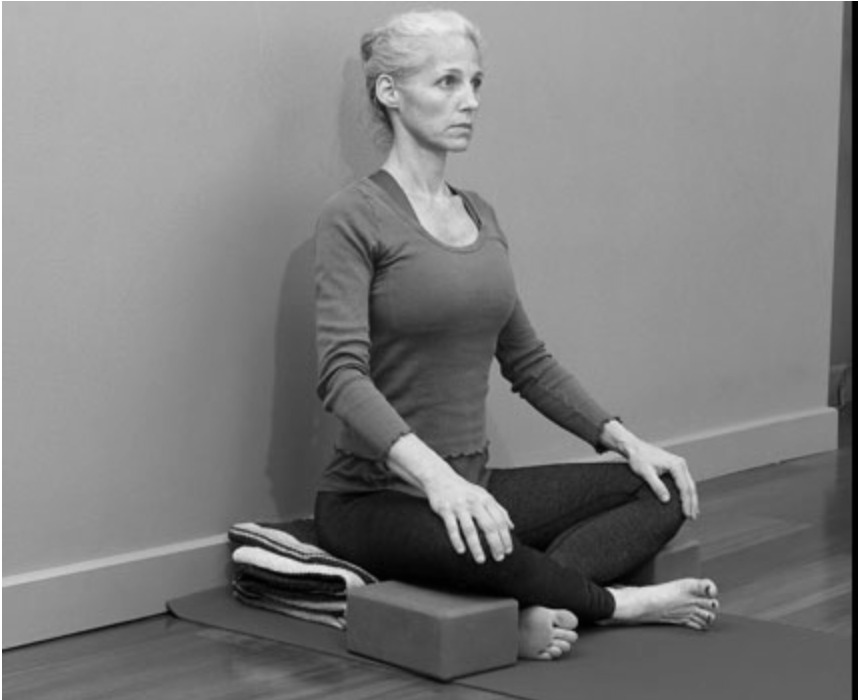- You are here:
- Home »
- Blog »
- Fitness After 40 »
- Why Stretch?
Why Stretch?
Because you feel tight. Or maybe something hurts. Maybe it’s because you think it’s the right thing to do like before a run or a workout.
I had a “ah-hah” moment a while ago when I had to sit down on the floor with my legs crossed in front me, bent over, hooking up a TV cable. Took about 20 minutes.
The position bothered me. My back bitched at me, my hips growled. I ignored it of course because I had work to do. Body go away, I have stuff to get done.
Standing back up was a slow, arduous, intermittently painful unwinding like the Tin Man waking up.
I thought, “Well, when was the last time you sat on the floor with your legs crossed like that for that long? Oh, yeah. Taj Mahal concert 1974. ”
True story. My first concert ever. I was attending Hamilton College in NY. Taj Mahal played in the college gym. We all just sat down crossed legged on the floor for a couple of hours. Of course, maybe it was the billowing cloud of pot smoke that made it comfortable. I had no clue what the smell was but I felt oddly great.
Now the temptation is to go right after that limitation. S T R E T C H til it you can’t take it or mash something into it like a lacrosse ball. Find one of those good groin stretches and get after it.
This works sometimes but generally not often and especially after the age 40.
After 40, you’ll more likely bust something.
See, you have to think of something like sitting on the floor as a movement. It’s not a stretch. Yeah, I know it feels like it is because stuff is tight. But the definition of stretching is someone else doing it to you, not you doing it.
I realize I am fighting eons of entrenched belief here. But I think of my writing as a vehicle to help you become more fit, healthier, happier.
And sometimes what’s in the way is a definition.
Sitting on the floor, legs crossed, bent over and working on the TV cable is a movement. Posture and movement go hand in hand. Sitting in front of a computer you have a certain sitting posture but it’s not static. Your hands and arms ar moving, your head moves, your body moves a bit. You might be slumped over like your head weighs 30lbs but it’s a blend of posture and movement.
Movement is transition from posture to posture if you break the movement down into slow motion segments.
Stretching the body is a passive process. There is no transition through a series of postures. It’s much more like stretching a rubber band.
Stretching yourself can be an active process, in the sense of personal growth, but I’m not talking about that right now.
All that stuff people do before a run or a workout, the hamstring “stretch” or shoulder or quad is all movement.
So, who cares? It’s just a word.
If you think differently about something, your actions change. And if the way you’re thinking is something helpful or positive, then your actions will be too.
What keeps you from sitting on the floor comfortably is lack of movement, generally lower back and hips. Movement is governed by your nervous system.
When you hit the end of your movement, the receptors in your tissues fire off signals to the brain which in turn contract the muscles to keep you from tearing something.
It’s a built-in protective mechanism.
When you think about it, that’s a good design. Imagine if those sensors failed while I’m on the floor cranking away on my spine and hips and then when I go to get up only to discover a number of new injuries.
When you reach the end of your range, well, you’re at the end of your available movement.
So how do you change it?
Rarely by stretching alone.
With clients, I would move their limb a certain amount, coax them to move it, I move it, they turn it, rotate it, etc. It’s working into the barriers a little at a time trying to not set off those sensors.
Sometimes you have to reduce the load on the body area to sneak past the sensors.
For example, in yoga, people sometimes use foam blocks to place under the legs (in a sitting, crossed legged position) while sitting on a stack of towels or blankets.

Image Source: http://www.geronet.ucla.edu
This small change reduces the tension on the hip and lower back tissues allowing you to sit in the best posture while sending a message to the brain that this position is okay, so calm down.
Over time, you reduce the height of the blocks and blankets gradually increasing the range of motion while teaching the brain the new posture and associated movements.
Slow, deep breaths also help the nervous system to calm down and learn the new position.
When something in your body feels tight, it means, nearly all the time, that you’re at the end of your available movement and need to teach your body how to improve that movement rather than try to stretch it by forcing it into the new range.
Like I said, stretching carries decades of belief inside it. If you can look at it differently, you’ll approach the issue differently and I think have much better success.
I reframe stretching as movement and in that sense, yes, you should “stretch” yourself by learning new movements.
That’s all I have for now.
Thanks for reading.

PS – If you’re interested in what I do for exercise and training, go here. For my books, go here
PPS – If you like this article, why not share it with a friend?
